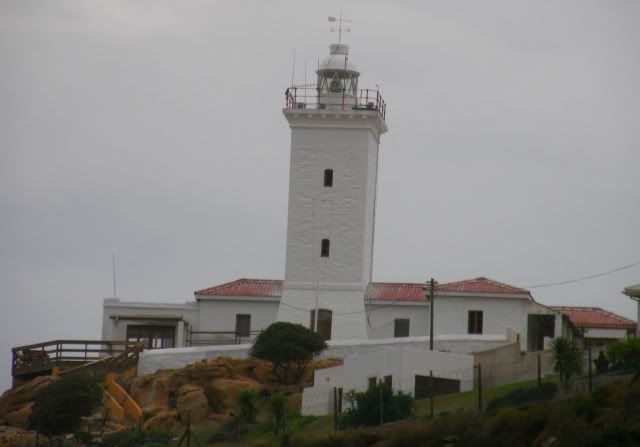Light Type: Automatic lamp-exchanger
Light Character: Group flashing, showing two flashes every 15 seconds
Light Range: 22 sea miles
Light Power: 450 000 CD
Height of focal Plane: 0 metres above high water
The Cape St Blaize lighthouse was erected in 1864. And up until recently, was one of the only two lighthouses manned 24 hours daily on the South African Coastline. Until the late 1970s a clockwork system was originally used to turn the lens and it required a lightkeeper to climb up the tower and wind it up every three hours! All the navigational aids and joining plant are fully automated now, but a senior lightkeeper and two lightkeepers are still employed. A constant radio watch is kept and the regular meteorological duties are also undertaken.


Ancient Khoi found shelter in the Cape St. Blaize Cave near the Lighthouse. St Blaize Cave is the biggest and most important cave of 15 caves in the area of Cape St Blaize.
The cave has always been a lookout point and is still used today for whale and dolphin watching. But 1999 the caves were choosen for excavation by the paleo-anthropologist Prof Curtis Marean of the Institute of Human Origins at Arizona State University in the U.S.A.
Cape St Blaize Cave in Mossel Bay in South Africa
The excavations were especially successful in St Blaize Cave and Cave PP13B. They revealed evidence that early man lived along the Southern Cape coast 164,000 years ago. A scientific sensation was evidence, that early man had made use of marine resources for food. The so far earliest evidence was only 120,000 years, which means that humans started doing this at least 40,000 years earlier. There are many rock art sites in the area and ancient Khoisan fish traps. Obviously those sites are much younger.
Google Earth Placemark
Sources: Lighthouses of South Africa; www.showcaves.com

No comments:
Post a Comment